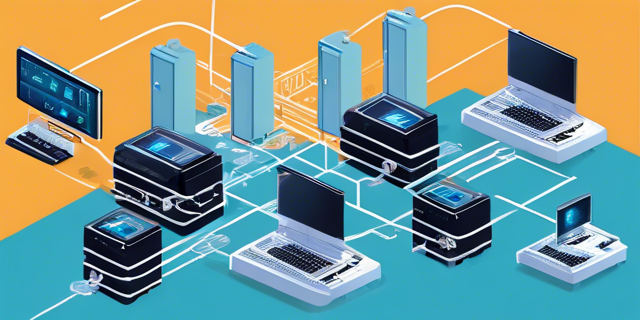Serverless computing has become a significant trend in the software development landscape, offering a new approach to building and deploying applications. In this blog post, we’ll dive into what serverless architecture is, explore its advantages, discuss common use cases, and address potential challenges you might face when adopting this paradigm.
What is Serverless Architecture?
Serverless architecture refers to a cloud computing execution model where the cloud provider dynamically manages the allocation and provisioning of servers. Developers can write and deploy code without worrying about the underlying infrastructure, scaling, or maintenance. Despite its name, “serverless” doesn’t mean there are no servers involved; it simply means that server management is abstracted away from the developer.
Popular serverless platforms include AWS Lambda, Google Cloud Functions, and Azure Functions, which allow you to run functions in response to events, automatically handling the scaling and provisioning required.
Advantages of Serverless Architecture
- Cost Efficiency
- Pay-as-You-Go: With serverless, you only pay for the compute time you consume. There’s no need to pay for idle servers, leading to significant cost savings, especially for applications with variable workloads.
- Reduced Infrastructure Costs: Since the cloud provider handles server management, you can save on operational costs related to infrastructure maintenance and monitoring.
- Scalability
- Automatic Scaling: Serverless platforms automatically scale up or down based on demand. Whether you have a sudden spike in traffic or a slow day, the platform adjusts resources accordingly, ensuring consistent performance without manual intervention.
- Global Availability: Many serverless platforms offer global deployment options, allowing your functions to run closer to users, reducing latency and improving the user experience.
- Focus on Code, Not Infrastructure
- Increased Productivity: Developers can focus on writing code rather than managing infrastructure. This leads to faster development cycles, as teams don’t need to worry about provisioning, scaling, or maintaining servers.
- Simplified Operations: By offloading infrastructure concerns to the cloud provider, your team can reduce the operational burden, allowing for a more streamlined DevOps process.
- Event-Driven Execution
- Efficient Resource Utilization: Serverless functions are triggered by events such as HTTP requests, file uploads, or database changes. This event-driven model ensures that compute resources are only used when necessary, leading to efficient resource utilization.
- Responsive Design: Applications can be designed to respond to specific events in real-time, enabling faster processing and reaction to user inputs or system changes.
Common Use Cases for Serverless
- Microservices Architecture
- Decoupled Services: Serverless functions are ideal for microservices, where each function can perform a specific task independently. This allows for easier maintenance, testing, and deployment of individual services.
- Real-Time Data Processing
- Stream Processing: Serverless is perfect for processing data streams in real-time, such as logs, social media feeds, or IoT sensor data. Functions can be triggered by data ingestion events and process data on the fly.
- API Backends
- Lightweight APIs: Serverless functions can be used to build lightweight, scalable API backends. These APIs can handle various requests, such as fetching data from a database, performing calculations, or integrating with third-party services.
- Scheduled Tasks
- Cron Jobs: Serverless platforms can run functions on a schedule, making them a great fit for tasks like data backups, report generation, or sending out notifications.
- Event-Driven Applications
- Responsive Systems: Build applications that respond to events, such as user interactions, database updates, or external API calls. Serverless functions can process these events in real-time, enhancing the responsiveness of your application.
Challenges and How to Address Them
- Cold Starts
- Challenge: Cold starts occur when a serverless function is invoked after being idle for a while, leading to increased latency as the environment is initialized.
- Solution: To mitigate cold starts, consider using a combination of techniques such as provisioning concurrency (where supported), optimizing the function code to reduce initialization time, and using lightweight runtimes.
- Vendor Lock-In
- Challenge: Serverless architectures often rely on specific cloud provider services, which can lead to vendor lock-in, making it difficult to switch providers.
- Solution: To reduce dependency on a single provider, consider adopting a multi-cloud strategy, using open-source serverless frameworks like OpenFaaS, or designing functions to be portable across different platforms.
- Complexity in Debugging and Monitoring
- Challenge: Debugging and monitoring serverless applications can be complex due to the distributed nature of the architecture and the lack of direct access to the underlying infrastructure.
- Solution: Utilize cloud-native monitoring and
logging tools offered by your serverless platform, such as AWS CloudWatch or Azure Monitor. Additionally, implement structured logging, use tracing tools like AWS X-Ray, and adopt best practices for error handling to gain better visibility into your application’s behavior.
- Execution Time Limits
- Challenge: Serverless functions typically have a maximum execution time limit, which can be a constraint for long-running processes.
- Solution: Break down long-running tasks into smaller, more manageable functions, or consider using a different service, like managed containers, for workloads that exceed these limits.
- Security Concerns
- Challenge: While serverless platforms handle a lot of security responsibilities, you still need to secure your code, environment variables, and API endpoints.
- Solution: Follow the principle of least privilege when assigning permissions, encrypt sensitive data, use secure coding practices, and regularly update your dependencies to mitigate security risks.
Conclusion
Serverless architecture offers numerous benefits, including cost efficiency, scalability, and the ability to focus on writing code without worrying about infrastructure. It’s particularly well-suited for event-driven applications, microservices, and real-time data processing. However, like any technology, it comes with its own set of challenges, such as cold starts, vendor lock-in, and execution time limits. By understanding these challenges and applying the appropriate solutions, you can leverage serverless computing to build robust, scalable, and efficient applications.
As serverless technology continues to evolve, it presents an exciting opportunity for developers to rethink how they build and deploy software. Whether you’re looking to streamline operations, reduce costs, or build scalable applications, serverless architecture could be the right choice for your next project.

